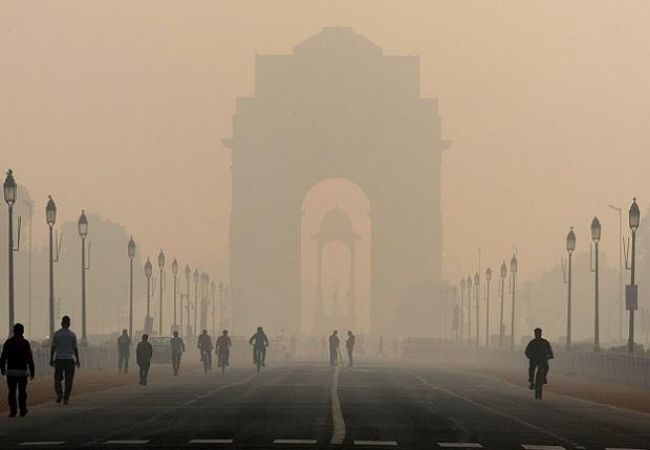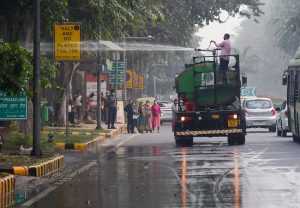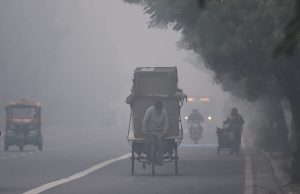
New Delhi: The air quality significantly improved from the “very poor” to the “poor” category on Wednesday for the first time in the last 10 days, as per the System of Air Quality & Weather Forecasting & Research (SAFAR).
The overall Air Quality Index (AQI) stood at 280 today.
Several areas in the national capital including ITO, Lodhi Road, and Mathura Road recorded air quality in “very poor” air with an
AQI of 333, 303, and 346 while the AQI at Anand Vihar and Jahangirpuri were in the “severe” category with an AQI 422 and 436 respectively.
As per the SAFAR, the PM 10 levels were recorded at 58 in the ‘satisfactory’ category and PM 2.5 levels were recorded at 38 in the ‘satisfactory’ category.

The air pollution level in the National Capital Region (NCR) fluctuated between “very poor” and “poor”. Gurugram and Noida recorded AQI of 283 and 303 in the “poor” and “very poor” categories on Wednesday morning.
According to the SAFAR bulletin, from November 27 onwards local surface winds are likely to increase which will result in improvement of air quality.
The share of stubble burning to Delhi’s PM2.5 is 3 per cent and the effective fire count is 770.
“The AQI today indicates ‘poor’ category. Winds at the transport level are likely to slow down and also change direction from northwest to south/southeast tomorrow and north or northwest on 25th. Local surface winds are also relatively low for the next 3 days that reduce the dispersion of pollutants leading to deterioration. The net effect is that air quality is likely to be within the ‘poor’ or ‘lower end of very poor’ category for the next 3 days. From 27th onwards local surface winds are likely to increase resulting in improvement of air quality but expected to be within the ‘poor’ or ‘lower end of very poor’ category range. The effective stubble fire count is 770 and its %share in Delhi’s PM2.5 is 3 per cent,” it said in a bulletin.

An AQI between zero and 50 is considered ‘good’, 51 and 100 ‘satisfactory’, 101 and 200 ‘moderate’, 201 and 300 ‘poor’, 301 and 400 ‘very poor’, and 401 and 500 ‘severe’.
With an aim to curb air pollution, the Arvind Kejriwal government on Sunday has extended the ban imposed on the entry of trucks in Delhi carrying non-essential items till November 26.
Delhi government has also asked its employees to continue working from home till Friday.
The government has also asked the private offices and institutions to let their employees work from home till November 26 to reduce the number of vehicles on the road.




